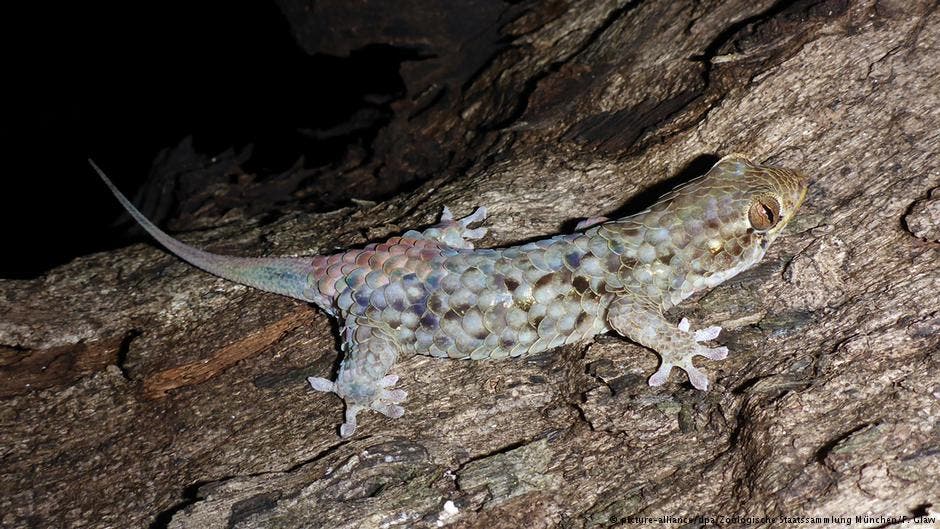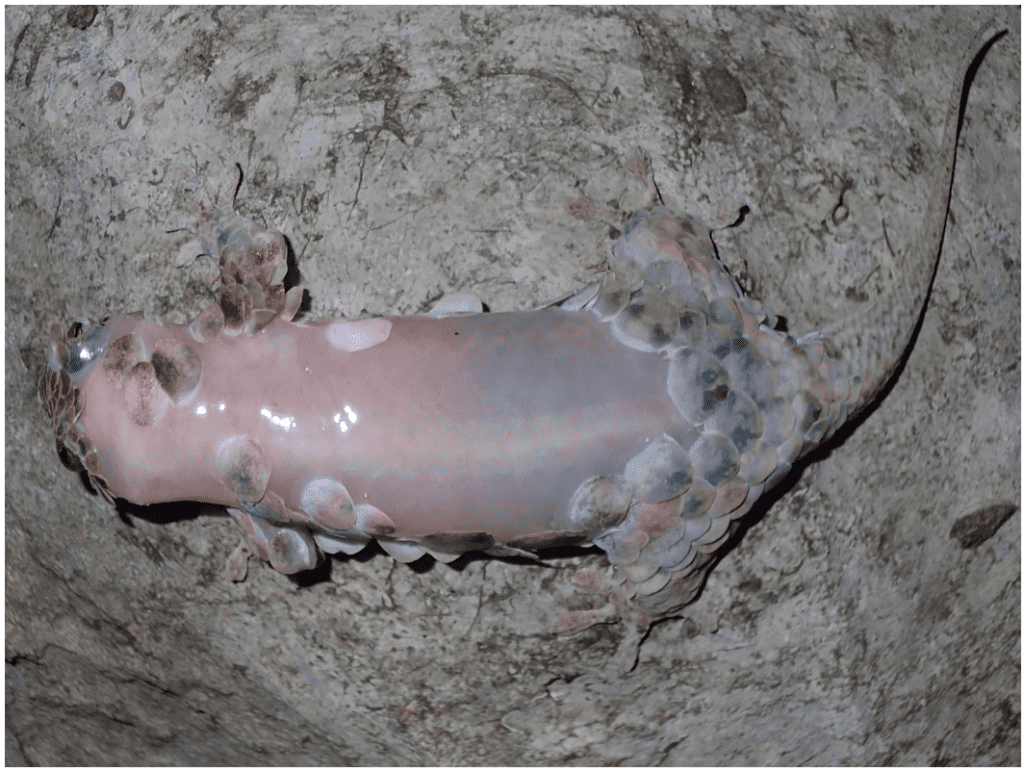
A new gecko species from Madasgar employs a unique strategy to evade predators. When a predator such as a snake strikes the gecko, it’s not dinner he’s getting but a mouthful of scales.
A handy, detachable body armor

Geckolepis megalepis probably has the largest body scales of any gecko. This is no coincidence — the animal evolved in such a manner to make it easier to remove the armor. The larger the surface area of the scale, the easier it is for the scales to come off, like a glove off the hand. Once the scales are pulled off, however, the gecko is totally naked and exposed, revealing its pink, shiny skin.
Mark Scherz, a herpetologist at the Bavarian State Collection for Zoology in Munich, and colleagues say removing the scales doesn’t produce any visible scarring. In a matter of weeks, the gecko is able to regenerate its lost scales as if nothing happened, as reported in PeerJ.
“This regeneration is, as far as we have been able to tell, scarless, and the resulting regenerated scales are indistinguishable from original ones,” said Scherz for the Washington Post. “That is not the case of many other geckos, in which the regenerated scales have a distinctly different appearance to the original ones.”

G. megalepis can shed its scales lightning fast, and it doesn’t take a bite either. When researchers tried to capture it with cotton pads, the gecko immediately shed its armor. They eventually managed to capture a specimen with the scales intact using plastic bags.
“I just also want to highlight the fact that the lengths that animals can go to in order to escape predation are incredible. These geckos have the largest scales of any species, which, far from rendering them more protected, we think makes them particularly easy to lose. But what these geckos drop are not just scales, but skin as well! And just like the tail, it is also partially voluntary. The kind of evolutionary pressure that would cause that degree of adaptation is hard to imagine, but we know of few examples of animals that are better adapted to escape from would-be predators in a more extreme way,” Scherz said in an interview.

There’s a lot we can learn from this crafty gecko. The German researchers made CT scans of the reptile’s body and they hope this information can one day provide valuable insights. Such information, for instance, could be useful in the field of medicine for accelerating human skin healing.


